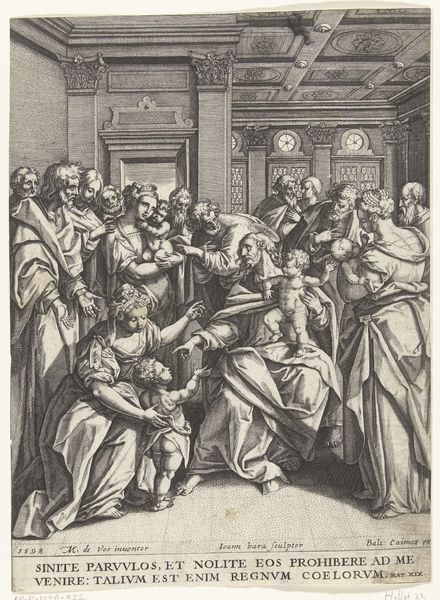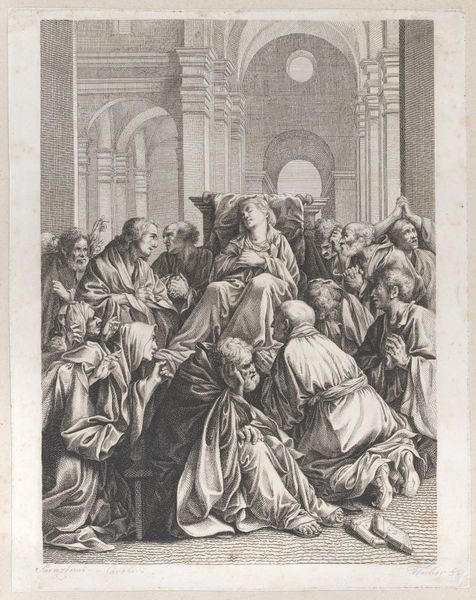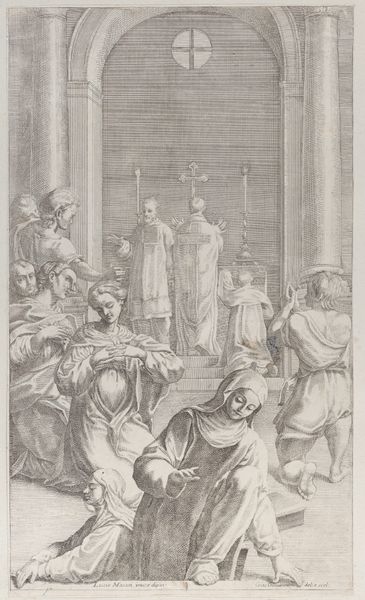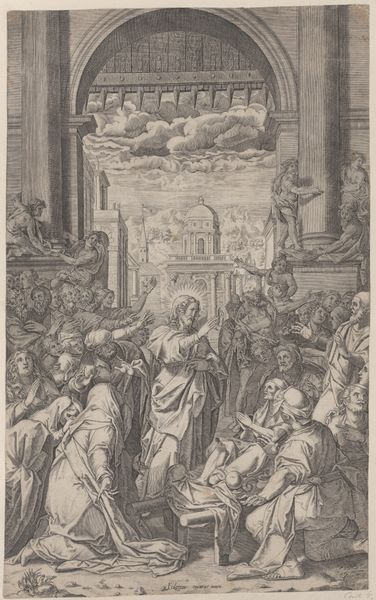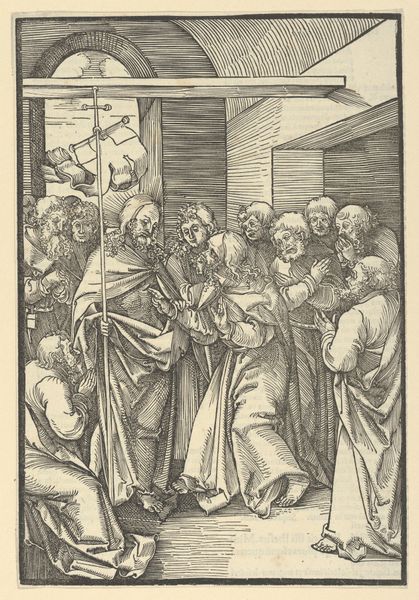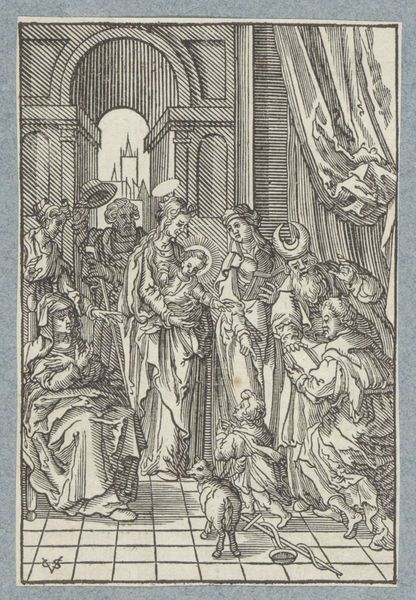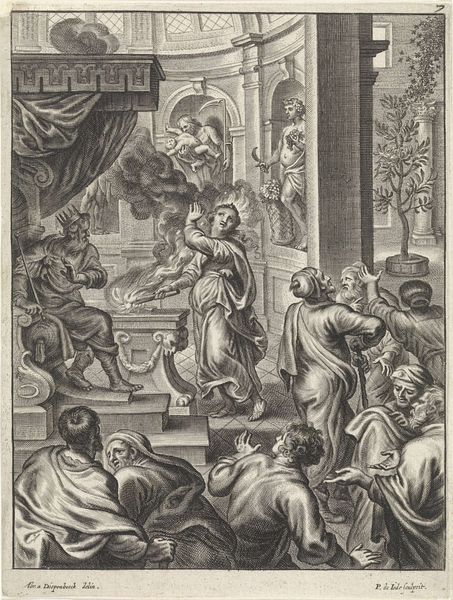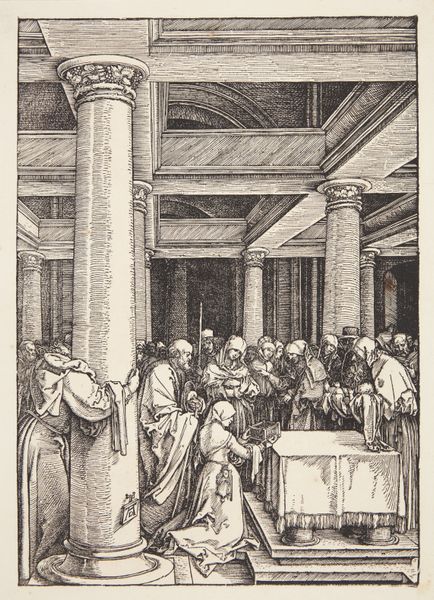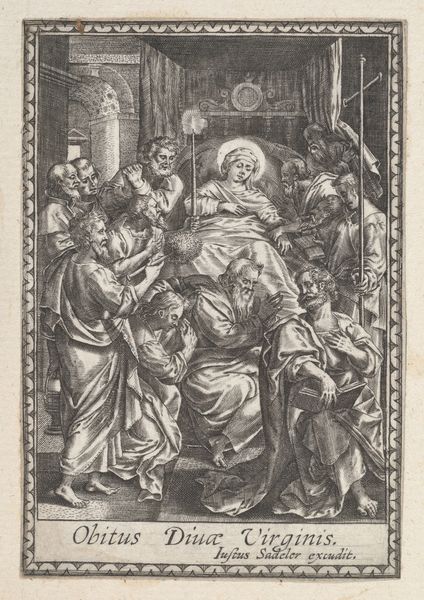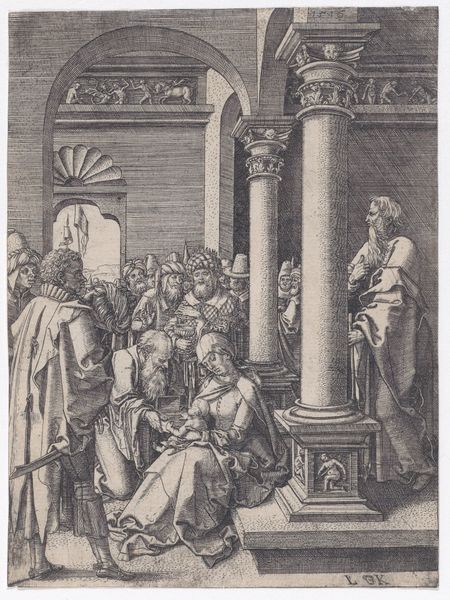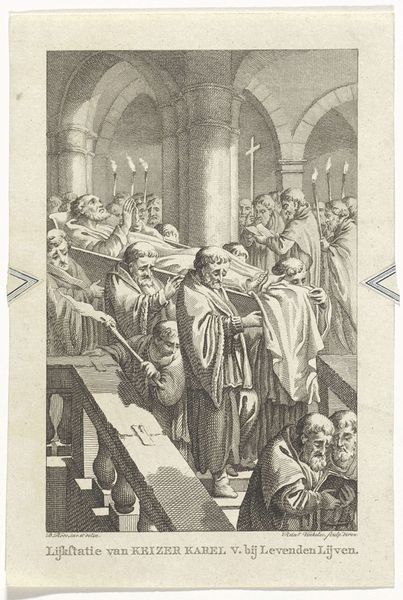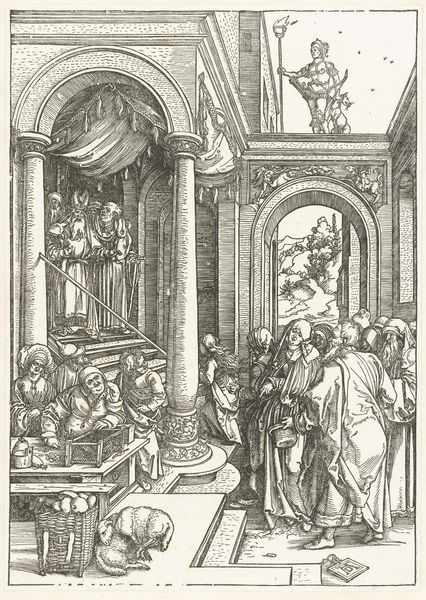
Death of the Virgin, lying on a chair at center, surrounded by Apostles, inside a temple 1619
0:00
0:00
drawing, print, engraving
#
drawing
#
baroque
# print
#
landscape
#
perspective
#
figuration
#
history-painting
#
engraving
Dimensions: Plate: 18 7/16 × 11 3/16 in. (46.9 × 28.4 cm) Sheet: 21 1/2 × 14 3/4 in. (54.6 × 37.5 cm)
Copyright: Public Domain
Editor: So, here we have "Death of the Virgin, lying on a chair at center, surrounded by Apostles, inside a temple," an engraving by Jean Le Clerc, dating back to 1619. It feels like a stage play almost, with this intense grief so meticulously displayed. What historical context do you think informs this dramatic presentation? Curator: It's a fascinating example of how religious narratives were being visually consumed in the early 17th century. Consider the Counter-Reformation. The Catholic Church needed compelling imagery to reaffirm its doctrines and inspire piety in the face of Protestant challenges. Think about the emotional tenor here. Editor: The apostles are practically a Greek chorus of anguish. Curator: Exactly! And Le Clerc is utilizing very specific visual strategies to achieve this. Note the theatrical lighting, almost as if the Virgin is center stage. What does that stage evoke? Is this simply a rendering of sacred scripture or more? Editor: It feels very consciously constructed for public consumption, not necessarily reflective of lived experience, but definitely shaped by specific representational needs. This could be about power too, isn't it? A declaration? Curator: Precisely. It's about solidifying religious authority through the emotional manipulation of the viewer. It begs us to consider the role of art in shaping collective memory and affirming dominant ideologies. What do you make of the perspective? Editor: The way the artist placed the characters and built the interior is masterful. It is drawing the viewer right into this temple setting. I learned that even art from centuries ago might address today’s needs of building an inclusive community that connects to and learns from the past. Curator: And understanding those representational strategies lets us become more aware of how such cultural mechanisms operate, even today.
Comments
No comments
Be the first to comment and join the conversation on the ultimate creative platform.
